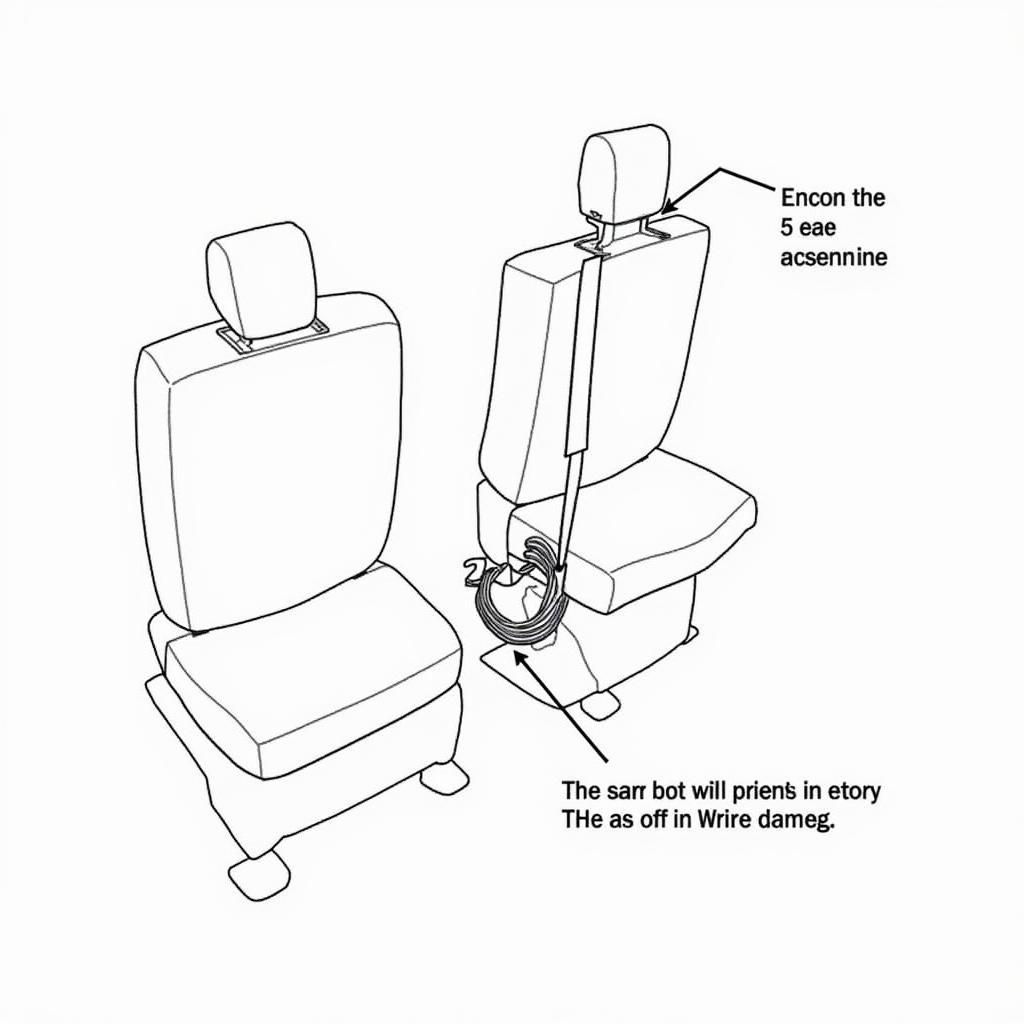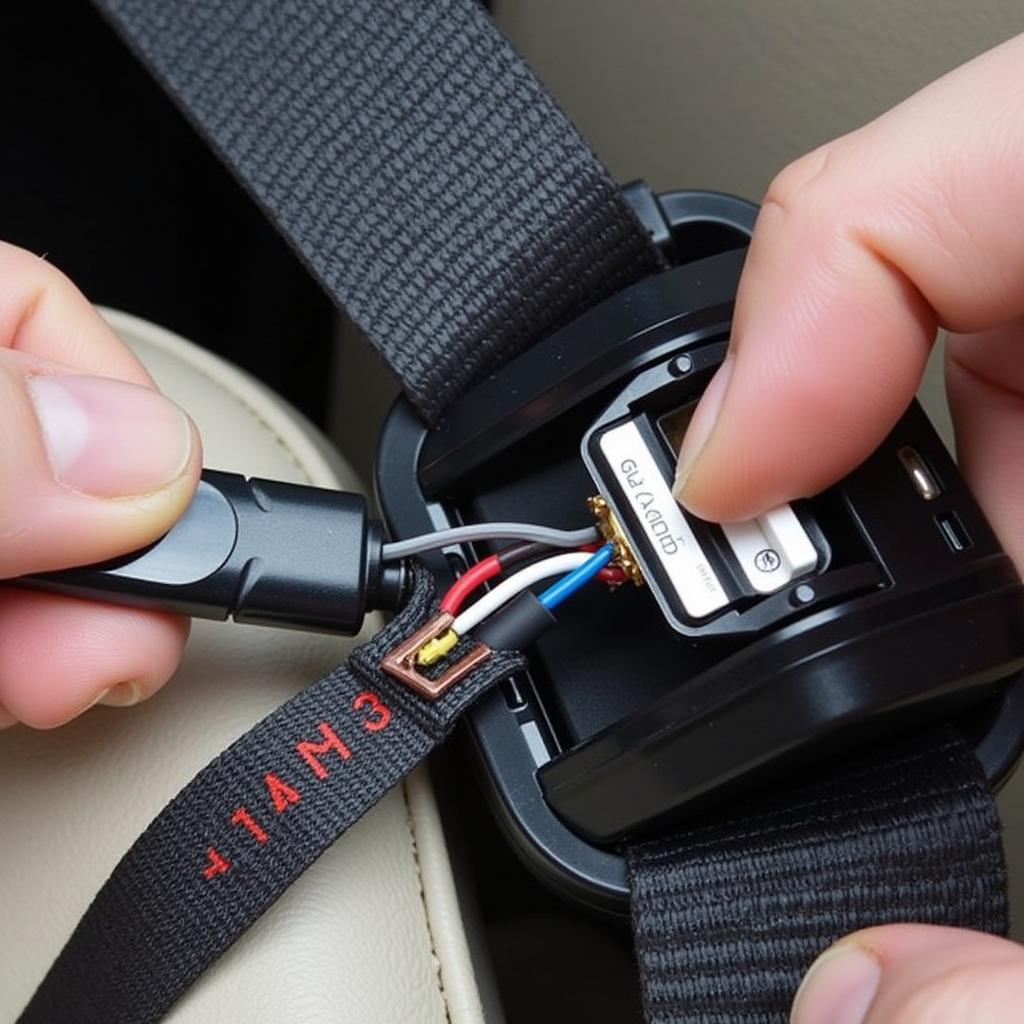The persistent beep of a seat belt warning buckle can be incredibly distracting, even frustrating. Understanding why your seat belt warning is activated and knowing how to resolve the issue can greatly enhance your driving experience. This article provides a comprehensive guide to troubleshooting seat belt warning buckle problems, covering common causes, solutions, and preventative measures. Let’s dive in and silence that annoying chime! See how you can increase volume on seat belt buckle warning 05 toyota matrix inrease volume on seat belt bukle warning.
Common Causes of Seat Belt Warning Buckle Issues
Several factors can trigger the seat belt warning buckle alarm. The most obvious is simply not wearing your seat belt. However, even when buckled, the warning can persist due to faulty sensors, wiring issues, or even a malfunctioning buckle itself. Sometimes, a foreign object lodged in the buckle can also trigger the alarm. Understanding the root cause is crucial for effective troubleshooting.
Faulty Sensors and Wiring
The seat belt system relies on sensors to detect whether the buckle is engaged. Over time, these sensors can wear out or become damaged, leading to a false warning. Similarly, damaged wiring in the seat belt system can disrupt the signal, causing the warning to activate even when the belt is fastened.
Malfunctioning Buckle
The buckle itself can also be the culprit. Internal mechanisms can break or wear down, preventing the buckle from properly registering as fastened. This can be a more complex issue to diagnose and often requires replacement.
Foreign Objects
Sometimes, a simple obstruction can trigger the warning. Coins, debris, or even small pieces of clothing can get lodged in the buckle mechanism, interfering with its operation. A visual inspection can often reveal this issue.
 Seat Belt Buckle Sensor and Wiring Diagram
Seat Belt Buckle Sensor and Wiring Diagram
Troubleshooting Steps for Seat Belt Warning Buckle
Addressing a persistent seat belt warning requires a systematic approach. Here’s a step-by-step guide to help you pinpoint the problem:
- Check the Obvious: Ensure the seat belt is properly fastened. Try re-buckling it firmly to ensure a secure connection.
- Inspect the Buckle: Look for any foreign objects lodged in the buckle mechanism. Use a small tool, like a toothpick, to carefully remove any debris.
- Check the Wiring: Visually inspect the wiring connected to the buckle. Look for any signs of damage, such as fraying or cuts. If any damage is found, consult a qualified technician for repair.
- Test the Sensor (Advanced): Testing the sensor requires specialized equipment. If you’re comfortable working with electrical systems, you can use a multimeter to check the sensor’s continuity. However, it’s often best to leave this to a professional.
- Seek Professional Help: If the problem persists, it’s best to consult a qualified automotive technician. They have the expertise and tools to diagnose and repair more complex issues, such as a malfunctioning buckle or faulty sensor.
 Checking the Seat Belt Buckle Wiring for Damage
Checking the Seat Belt Buckle Wiring for Damage
Preventative Measures
Preventing seat belt warning buckle issues is often easier than fixing them. Here are a few preventative measures to keep your seat belt system functioning properly:
- Regular Cleaning: Periodically clean the buckle with a vacuum cleaner or compressed air to remove debris that could interfere with its operation.
- Careful Handling: Avoid forcing the buckle or applying excessive pressure, as this can damage the internal mechanisms.
- Regular Inspections: During routine maintenance, ask your mechanic to inspect the seat belt system for any signs of wear or damage.
“Regular maintenance and careful handling can significantly extend the life of your seat belt system and prevent annoying warning chimes,” says John Smith, Senior Automotive Electrical Engineer at AutoTech Solutions.
Remote Diagnostics and Programming for Seat Belt Issues
In some cases, advanced diagnostics and programming may be necessary to resolve seat belt warning buckle issues. Remote diagnostic services, such as those offered by specialized automotive technicians, can often identify the root cause without requiring a physical visit. This can save time and money, especially for software-related issues. Remote programming can also be used to update the vehicle’s software and address any glitches affecting the seat belt system.
For information regarding warnings in another language, see seat belt warning buckle in spanish. Also, it is important to understand what triggers the warning to better address it, such as what happens when your seat belt warning light wont come on when unbuckled.
Conclusion
Addressing a seat belt warning buckle issue is crucial for both safety and peace of mind. By understanding the common causes and following the troubleshooting steps outlined in this article, you can effectively resolve the problem and prevent future occurrences. Remember, a properly functioning seat belt is essential for your safety on the road. Don’t ignore that persistent chime – address the issue promptly and ensure your seat belt system is working as intended. For those concerned with silencing the alarm, consider exploring options such as a car vehicle safety seat belt buckle insert warning alarm stopper. You can also find information about buckle seat belt warning.
“Ignoring a persistent seat belt warning can be a safety risk. Addressing the issue promptly ensures your protection on the road,” says Maria Garcia, Lead Technician at CarSafe Diagnostics.
